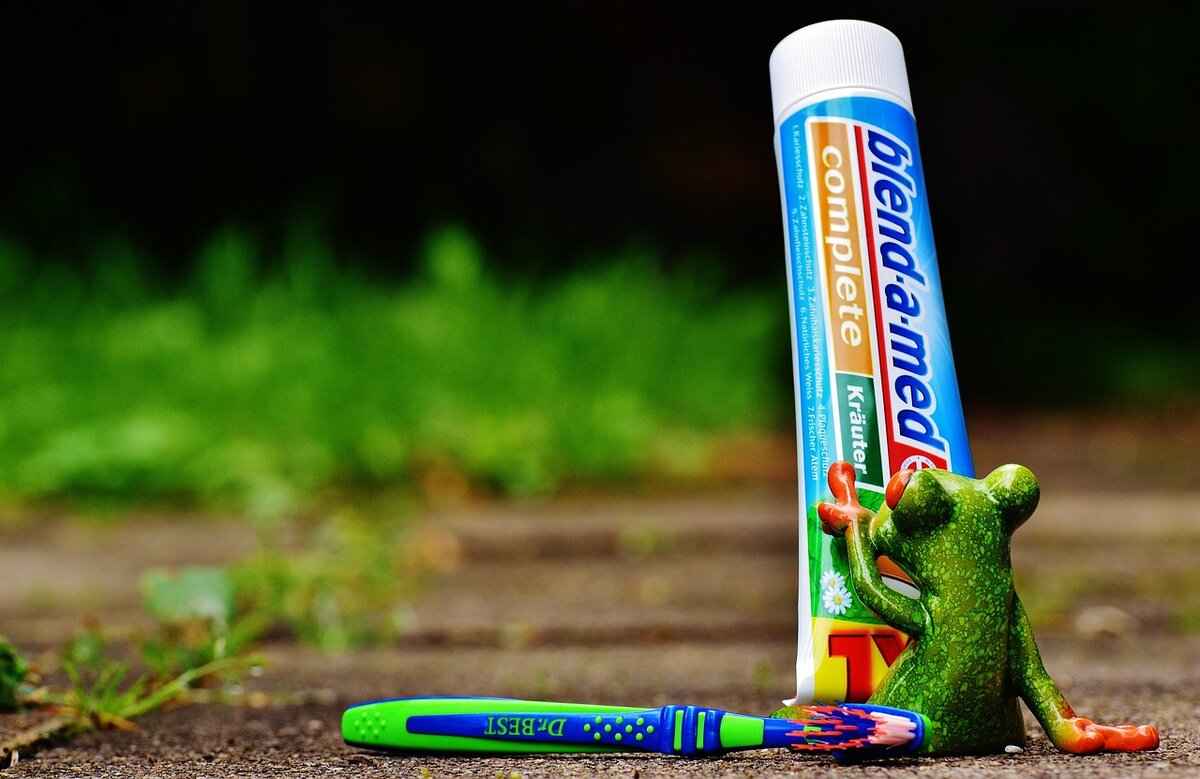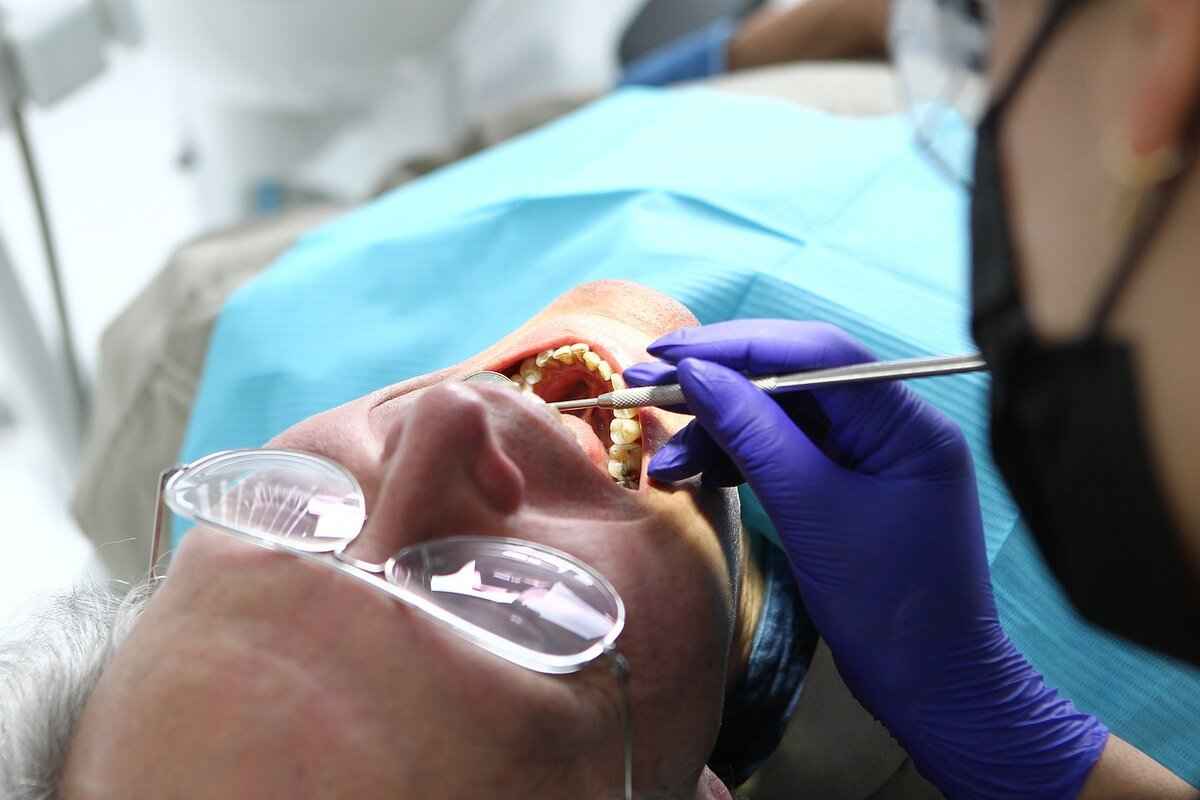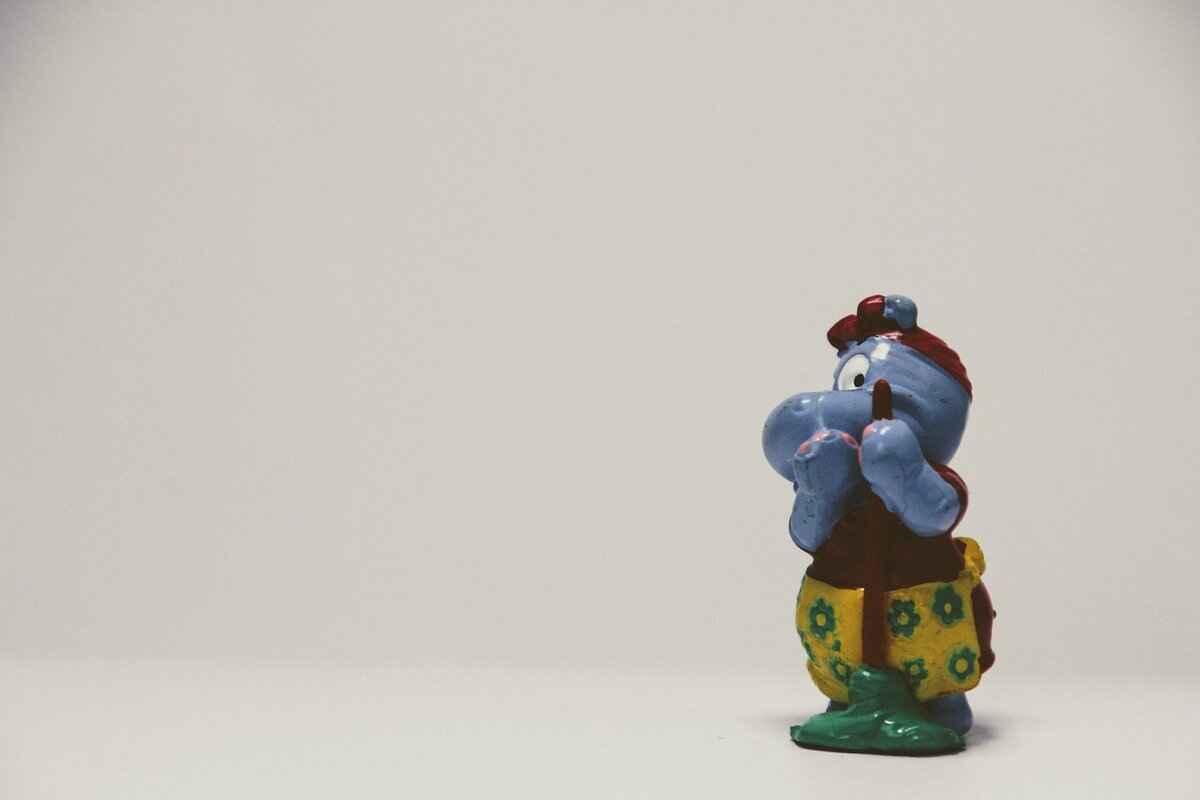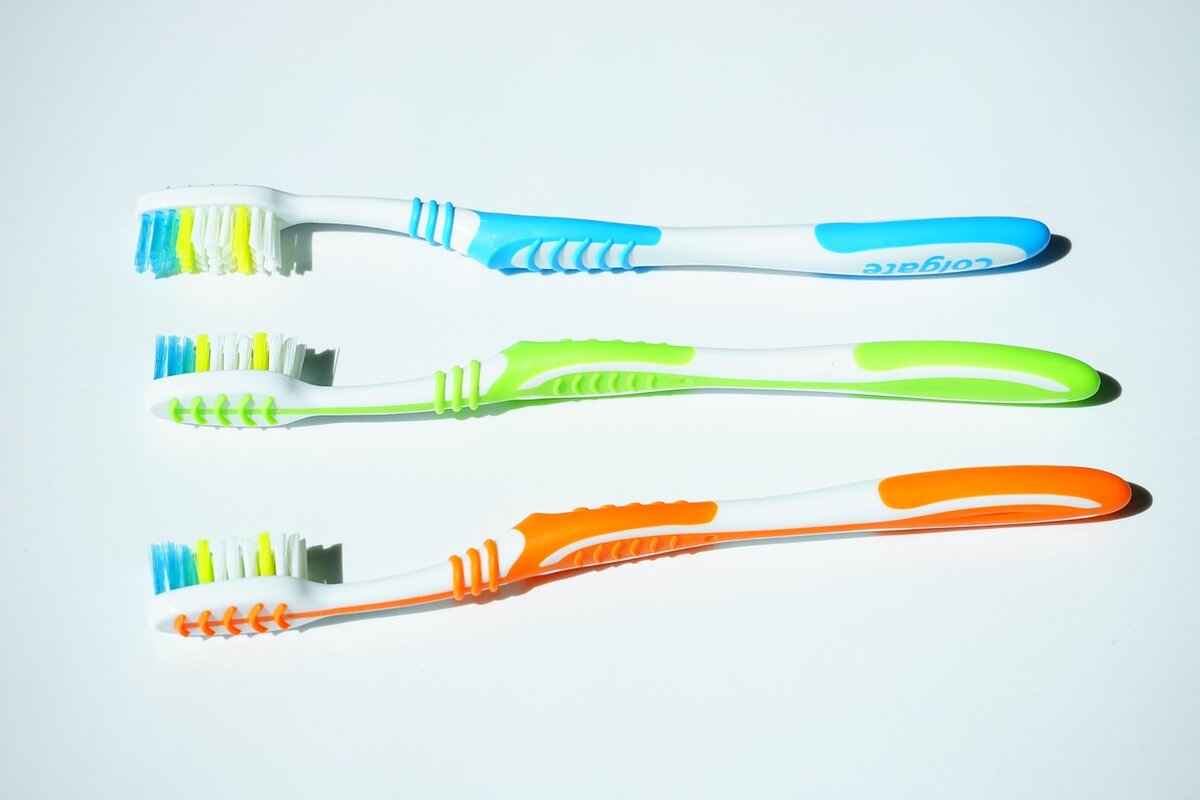This article explores effective strategies to alleviate discomfort following dental cleanings, providing practical tips and insights for a smoother recovery process and enhanced oral health.
Understanding Post-Cleaning Discomfort
Many individuals experience discomfort after teeth cleaning. This discomfort can stem from various factors, including the cleaning techniques used and individual sensitivity levels. Understanding the reasons behind this pain can help in managing it effectively and knowing what to expect during recovery.
Common Causes of Pain After Teeth Cleaning
- Gum Sensitivity and Irritation: Gum sensitivity is a prevalent issue following teeth cleaning. The cleaning process may irritate gums, leading to discomfort.
- Tooth Sensitivity Post-Cleaning: Increased sensitivity in teeth can occur after a cleaning session, often due to exposure of the tooth surface or underlying dentin.
Effective Home Remedies for Pain Relief
Various home remedies can provide immediate relief from discomfort. Here are some practical solutions:
- Saltwater Rinses: A simple saltwater rinse can help soothe inflamed gums. Mix a teaspoon of salt in a glass of warm water and swish gently.
- Cold Compress Application: Applying a cold compress to the outside of your cheek can reduce swelling and numb pain effectively. Ensure to wrap the ice in a cloth to prevent skin irritation.
Over-the-Counter Pain Relief Options
Over-the-counter medications can also help manage pain after teeth cleaning. Some common options include:
- Nonsteroidal Anti-Inflammatory Drugs (NSAIDs): These medications, such as ibuprofen, can alleviate dental pain by reducing inflammation.
- Acetaminophen for Pain Management: Acetaminophen is another effective option for pain relief, particularly for those who cannot take NSAIDs.
When to Consult Your Dentist
In some cases, pain may indicate a more serious issue. It is essential to recognize signs that warrant a visit to the dentist:
- Persistent Pain Beyond 48 Hours: If pain lasts longer than two days, it may require professional attention.
- Signs of Infection or Complications: Symptoms such as increased swelling, fever, or pus should prompt immediate dental consultation.
Maintaining Oral Hygiene After Cleaning
Proper oral hygiene post-cleaning is essential for recovery. Here are tips to maintain hygiene while minimizing discomfort:
- Gentle Brushing Techniques: Use a soft-bristled toothbrush and gentle strokes to protect sensitive gums.
- Choosing the Right Oral Care Products: Opt for toothpaste designed for sensitive teeth to help alleviate discomfort during brushing.
Long-Term Strategies for Oral Health
Implementing long-term strategies helps prevent discomfort during future cleanings. Consider these practices:
- Regular Dental Check-Ups: Routine visits to the dentist are crucial for maintaining oral health and preventing issues that may lead to discomfort.
- Adopting a Balanced Diet: A diet rich in vitamins and minerals supports healthy teeth and gums, reducing the likelihood of sensitivity.
By following these tips and understanding the causes of discomfort, individuals can ensure a more comfortable dental experience and promote overall oral health.

Understanding Post-Cleaning Discomfort
Many individuals experience discomfort after teeth cleaning, which can be a source of anxiety for those who prioritize their oral health. This discomfort is often temporary, but understanding the reasons behind it can significantly aid in managing and alleviating the pain. Knowing what to expect during recovery allows patients to prepare mentally and physically for the post-cleaning experience.
One of the primary reasons for discomfort is the mechanical cleaning process itself. During a dental cleaning, dental hygienists use various tools to remove plaque and tartar buildup from the teeth and gum line. This process can sometimes lead to gum irritation and increased sensitivity, particularly in individuals with pre-existing gum issues or those who have not had regular cleanings.
Another contributing factor to post-cleaning discomfort is tooth sensitivity. After the removal of plaque and tartar, the enamel may temporarily become more exposed, leading to heightened sensitivity to temperature changes or certain foods. This is especially common among those with thin enamel or previous dental work.
Additionally, the cleaning products used during the procedure, such as fluoride treatments or polishing pastes, can sometimes cause a mild reaction in sensitive individuals. It’s essential to communicate any known allergies or sensitivities to your dental hygienist before the procedure to minimize potential discomfort.
Understanding these factors can help patients take proactive steps to manage discomfort. For instance, discussing any concerns with the dental team prior to the cleaning can lead to tailored approaches that reduce pain. Techniques such as gentle cleaning methods can be employed to minimize gum irritation, and patients can also be advised on post-cleaning care that promotes healing and comfort.
In summary, while discomfort after teeth cleaning is common, being informed about its causes can empower individuals to manage their recovery effectively. By recognizing the factors contributing to pain, patients can work with their dental professionals to ensure a smoother and more comfortable post-cleaning experience.

Common Causes of Pain After Teeth Cleaning
Experiencing discomfort after a dental cleaning is a common occurrence for many individuals. Understanding the underlying causes of this pain can lead to better management strategies and a more comfortable recovery process. This section explores various factors contributing to discomfort following dental cleanings, providing insights that can help patients anticipate and address these issues.
- Gum Sensitivity and Irritation: One of the primary reasons for pain after teeth cleaning is gum sensitivity. During the cleaning process, dental hygienists use instruments that can irritate the gums, especially if there is pre-existing gum disease or inflammation. Patients may notice tenderness or bleeding, particularly in areas where plaque and tartar buildup was significant. To alleviate this discomfort, it is essential to follow up with gentle oral care practices.
- Tooth Sensitivity: Another common complaint is increased tooth sensitivity. The cleaning process can expose the dentin, the layer beneath the enamel, which can lead to heightened sensitivity to hot, cold, or sweet stimuli. This sensitivity can be temporary but may require special toothpaste designed for sensitive teeth to provide relief.
- Pressure and Discomfort from Cleaning Instruments: The tools used during dental cleanings can sometimes cause discomfort. Ultrasonic scalers and hand instruments apply pressure that may lead to soreness in the teeth and gums. Patients should communicate with their hygienist about any discomfort experienced during the procedure, as adjustments can often be made to enhance comfort.
- Allergic Reactions: In rare cases, individuals may experience allergic reactions to materials used during the cleaning process, such as latex gloves or specific cleaning solutions. If a patient has known allergies, it is crucial to inform the dental office beforehand to avoid any adverse reactions.
- Underlying Dental Issues: Sometimes, existing dental problems, such as cavities or gum disease, can exacerbate discomfort during and after cleaning. If pain persists, it may indicate that further dental evaluation is necessary to address these underlying issues.
Recognizing these common causes of pain can empower patients to take proactive steps in managing their discomfort. By discussing any concerns with their dental professionals and adhering to recommended post-cleaning care routines, individuals can enhance their recovery experience and maintain optimal oral health.
Gum Sensitivity and Irritation
Gum sensitivity is a common issue many individuals face after undergoing a professional teeth cleaning. This discomfort can arise from various factors during the cleaning process, leading to irritation and sensitivity in the gums. Understanding the causes of this sensitivity and exploring ways to alleviate it is essential for a smoother recovery and better oral health.
The cleaning process typically involves the use of instruments that can sometimes be harsh on the gums, especially if there is existing inflammation or gum disease. Scaling, which removes plaque and tartar buildup, can inadvertently irritate the soft tissues of the gums, leading to post-cleaning discomfort. Additionally, the use of ultrasonic cleaners, while effective, can also contribute to gum sensitivity due to the vibrations and pressure applied during the procedure.
To soothe irritated gums, it is important to adopt a few effective strategies. One of the first steps is to rinse with warm salt water. This simple solution can help reduce inflammation and promote healing. Mixing about half a teaspoon of salt in a glass of warm water and using it as a mouth rinse can provide relief. It is advisable to perform this rinse several times a day, especially after meals, to maintain oral hygiene and soothe the gums.
Additionally, applying a cold compress to the outside of the mouth can help numb the area and reduce swelling. This method is particularly effective in the first 24 hours following the cleaning. Wrap ice in a cloth or use a cold pack, applying it for 15-20 minutes at a time to avoid skin irritation.
Another important aspect of managing gum sensitivity is to be mindful of oral hygiene practices post-cleaning. Using a soft-bristled toothbrush can significantly reduce irritation while brushing. Gentle brushing techniques, combined with fluoride toothpaste designed for sensitive gums, can help maintain oral hygiene without exacerbating discomfort.
It is also beneficial to avoid certain foods that can irritate sensitive gums. Spicy, acidic, or hard foods should be minimized during the recovery period. Instead, focus on a diet rich in soft foods that are easy to chew, such as yogurt, mashed potatoes, and smoothies, to prevent additional discomfort.
Finally, staying hydrated is crucial. Drinking plenty of water throughout the day can help keep the gums moist and promote healing. Additionally, avoiding tobacco products and limiting alcohol consumption can further support gum health and recovery.
In summary, while gum sensitivity following teeth cleaning is common, understanding its causes and employing practical solutions can significantly alleviate discomfort. By incorporating gentle care practices, rinsing with salt water, and being mindful of dietary choices, individuals can enhance their recovery process and maintain optimal gum health.
Importance of Gentle Techniques
Maintaining optimal oral health is essential, and one of the most critical aspects of this is the cleaning process performed by dental professionals. However, for many individuals, the aftermath of teeth cleaning can lead to discomfort, particularly due to gum irritation. This highlights the importance of gentle cleaning techniques during dental procedures.
Gentle techniques are designed to minimize trauma to the gums and surrounding tissues. Dental professionals are trained to use tools and methods that effectively remove plaque and tartar without causing unnecessary irritation. This approach is especially significant for patients with pre-existing gum sensitivity or those who have undergone extensive dental work.
- Reduced Gum Irritation: Gentle cleaning methods help to prevent the harsh scraping that can lead to inflammation and pain. By using softer instruments and techniques, dentists can ensure that the cleaning process is as comfortable as possible.
- Enhanced Patient Comfort: When patients feel less discomfort during their cleaning, they are more likely to maintain regular dental visits. This is crucial for long-term oral health as consistent cleanings can prevent more severe dental issues down the line.
- Improved Healing: Gentle techniques not only reduce immediate discomfort but also promote faster healing of the gums post-cleaning. This is particularly important for patients who may have undergone procedures that leave their gums more vulnerable.
Moreover, dental professionals often incorporate patient feedback into their practice. By understanding how different cleaning techniques affect individual comfort levels, they can further refine their methods. This patient-centered approach ensures that each cleaning is tailored to the specific needs of the patient, enhancing overall satisfaction and outcomes.
In addition to the techniques used by dental professionals, patients can also play a role in minimizing gum irritation post-cleaning. Following the cleaning, it is advisable to avoid hard or abrasive foods, which can exacerbate sensitivity. Instead, opting for softer foods can aid in the healing process.
Furthermore, practicing gentle oral hygiene at home is equally important. Using a soft-bristled toothbrush and employing gentle brushing techniques can protect sensitive gums and maintain oral health between dental visits. Patients are encouraged to communicate with their dental care providers about their experiences and comfort levels during cleanings, allowing for adjustments that can lead to a more pleasant experience in the future.
In summary, the in dental cleanings cannot be overstated. By prioritizing patient comfort through gentle methods, dental professionals can significantly reduce gum irritation and enhance overall oral health outcomes. This not only fosters a positive relationship between patients and their dentists but also promotes a commitment to ongoing dental care.
Post-Cleaning Care for Gums
After undergoing a dental cleaning, many individuals may experience some level of discomfort in their gums. This discomfort can range from mild sensitivity to more pronounced pain. To ensure a smoother recovery and maintain optimal gum health, it is essential to follow specific care routines. Here, we outline effective post-cleaning care practices that can help alleviate gum discomfort and promote healing.
- Gentle Oral Hygiene: It is crucial to maintain a gentle oral hygiene routine immediately after your cleaning. Use a soft-bristled toothbrush to minimize irritation. Brushing too hard can exacerbate sensitivity, so focus on gentle strokes, particularly around the gum line.
- Saltwater Rinses: One of the most effective ways to soothe irritated gums is by using a saltwater rinse. Mix about half a teaspoon of salt in a glass of warm water and gently swish it around your mouth. This can help reduce inflammation and promote healing.
- Cold Compress Application: Applying a cold compress to the outside of your mouth can help numb the area and reduce swelling. Wrap ice in a cloth and apply it to your cheeks for 15-20 minutes. This method can provide significant relief from pain and discomfort.
- Hydration: Staying hydrated is essential for overall health, including gum health. Drink plenty of water after your cleaning to keep your mouth moist and help flush out any bacteria that may cause irritation.
- Avoiding Certain Foods: After a dental cleaning, it is advisable to avoid hard, crunchy, or spicy foods that could irritate sensitive gums. Opt for soft foods like yogurt, mashed potatoes, and smoothies to ease the discomfort.
- Use of Over-the-Counter Pain Relief: If discomfort persists, consider taking over-the-counter pain relievers such as ibuprofen or acetaminophen. These medications can help manage pain and inflammation effectively.
In addition to these immediate care practices, it is important to establish a long-term routine aimed at maintaining gum health. Regular dental check-ups and cleanings are vital in preventing gum disease and ensuring that any potential issues are addressed promptly. Additionally, adopting a balanced diet rich in vitamins and minerals can support gum health. Foods high in vitamin C, such as oranges and strawberries, can promote healing and strengthen your gums.
In conclusion, following these post-cleaning care practices can significantly alleviate gum discomfort and enhance recovery. By implementing gentle oral hygiene techniques, utilizing home remedies like saltwater rinses, and being mindful of your diet, you can maintain healthy gums and ensure a more comfortable dental experience.
Tooth Sensitivity Post-Cleaning
is a frequent concern for many patients after undergoing dental cleanings. This phenomenon can lead to discomfort that may linger for several hours or even days. Understanding the reasons behind this sensitivity and exploring effective solutions can significantly enhance the patient experience during recovery.
Tooth sensitivity occurs when the protective enamel on the teeth is compromised, exposing the underlying dentin. During a dental cleaning, the use of ultrasonic instruments and scaling tools can sometimes remove plaque and tartar that have built up over time. While this is essential for maintaining oral health, it can also lead to temporary sensitivity due to the following factors:
- Enamel Wear: The cleaning process can wear down the enamel, making teeth more susceptible to temperature changes and pressure.
- Gum Recession: If gums recede, the roots of the teeth become exposed, which can result in heightened sensitivity.
- Microfractures: The instruments used during cleaning can create tiny fractures in the enamel, contributing to discomfort.
Fortunately, there are several strategies to alleviate tooth sensitivity after a cleaning:
- Desensitizing Toothpaste: Using toothpaste specifically designed for sensitive teeth can help block pain signals from reaching the nerve. These products typically contain potassium nitrate or strontium chloride, which are effective in reducing sensitivity.
- Fluoride Treatments: Professional fluoride treatments applied by your dentist can strengthen enamel and reduce sensitivity. This treatment enhances the resistance of teeth to acid and decay.
- Temperature Moderation: Avoiding extremely hot or cold foods and beverages for a few days post-cleaning can help minimize discomfort. Stick to lukewarm options to give your teeth a chance to recover.
- Gentle Oral Hygiene Practices: When brushing, use a soft-bristled toothbrush and gentle strokes to avoid further irritation. Avoid aggressive brushing, which can exacerbate sensitivity.
In addition to these solutions, maintaining regular dental visits is crucial. Your dentist can monitor your oral health and provide tailored advice based on your specific needs. If sensitivity persists beyond a few days or worsens, it is important to consult your dentist, as this may indicate underlying issues that require professional attention.
In summary, while tooth sensitivity post-cleaning is common, understanding its causes and implementing effective strategies can help mitigate discomfort. By taking proactive steps, patients can ensure a smoother recovery and maintain optimal oral health.

Effective Home Remedies for Pain Relief
Experiencing discomfort after a dental cleaning can be quite common, but there are several home remedies that can provide immediate relief. These remedies are not only effective but also easy to implement, allowing you to manage your pain comfortably from the comfort of your own home. Below are some practical solutions that you can try to alleviate discomfort following your dental visit.
- Saltwater Rinses: One of the simplest and most effective remedies is a saltwater rinse. It helps to reduce inflammation and cleanse the mouth. To prepare, mix half a teaspoon of salt in a glass of warm water. Swish the solution around your mouth for about 30 seconds before spitting it out. Repeat this process two to three times a day for best results.
- Cold Compress Application: Applying a cold compress to the outside of your cheek can significantly reduce swelling and numb the pain. Wrap ice cubes in a clean cloth or use a cold pack, and apply it to the affected area for 15-20 minutes. This method is particularly beneficial in the first 24 hours after your cleaning.
- Clove Oil: Known for its analgesic properties, clove oil can be an excellent natural remedy for tooth pain. Apply a small amount of clove oil to a cotton ball and place it directly on the painful area. The eugenol in clove oil acts as a natural anesthetic, providing relief from discomfort.
- Turmeric Paste: Turmeric has anti-inflammatory properties that can help soothe pain. Create a paste by mixing turmeric powder with a few drops of water and applying it to the affected area. Leave it on for about 15 minutes before rinsing it off with warm water.
- Chamomile Tea: Chamomile is well-known for its soothing effects. Brew a cup of chamomile tea and let it cool slightly. You can use it as a mouth rinse or sip it slowly to enjoy its calming effects. Additionally, chamomile tea bags can be placed in the freezer and then applied as a cold compress.
- Hydration: Staying hydrated is crucial for oral health and can help flush out toxins that may contribute to discomfort. Drinking plenty of water can also keep your mouth moist and assist in the healing process.
- Rest and Relaxation: Sometimes, simply taking time to rest can help your body recover. Avoid strenuous activities and allow yourself to relax, as stress can exacerbate pain and discomfort.
Incorporating these home remedies into your post-cleaning routine can significantly enhance your comfort and promote healing. Always remember to consult your dentist if your discomfort persists or worsens, as it may indicate a more serious issue. By taking proactive steps to manage your pain, you can ensure a smoother recovery process and maintain your oral health.
Saltwater Rinses
are a time-tested remedy for soothing inflamed gums and promoting oral health. This natural solution is not only effective but also incredibly easy to prepare and use. In this section, we will explore the benefits of saltwater rinses, how to make them, and best practices for optimal results.
When it comes to oral hygiene, maintaining healthy gums is crucial. Saltwater rinses can help reduce inflammation, alleviate discomfort, and even assist in the healing process after dental procedures. The saline solution works by creating an environment that inhibits the growth of bacteria, helping to prevent infection and accelerate healing.
Preparing a saltwater rinse is straightforward and requires minimal ingredients:
- Ingredients:
- 1 cup of warm water
- 1 teaspoon of salt (preferably sea salt or Himalayan salt)
Instructions:
1. Begin by boiling water to ensure it is clean.2. Allow the water to cool slightly until it is warm but not hot.3. Add 1 teaspoon of salt to the warm water and stir until fully dissolved.4. Your saltwater rinse is now ready for use.
To maximize the benefits of your saltwater rinse, follow these guidelines:
- Swish the rinse around your mouth for at least 30 seconds, ensuring it reaches all areas, especially inflamed gums.
- Spit out the solution; do not swallow it, as it can lead to dehydration and electrolyte imbalance.
- For best results, use the rinse 2-3 times a day, particularly after meals and before bedtime.
It is important to remember that while saltwater rinses can provide relief, they should not replace regular dental care practices. Incorporate them into your routine as a supplementary measure to enhance gum health.
The advantages of using saltwater rinses extend beyond mere comfort:
- Reduces Inflammation: The saline solution helps to decrease swelling and redness in the gums.
- Promotes Healing: Saltwater can accelerate the healing process of minor cuts or abrasions in the mouth.
- Freshens Breath: The antibacterial properties of salt can help in neutralizing odors and reducing bad breath.
- Cost-Effective: This remedy is inexpensive and can be made with ingredients commonly found at home.
In conclusion, incorporating a saltwater rinse into your oral care routine can provide significant benefits for gum health and overall oral hygiene. Whether you are looking to soothe inflamed gums or maintain a healthy mouth, this simple solution is worth considering.
Cold Compress Application
Applying a cold compress is a highly effective method for managing discomfort after dental cleanings. This technique not only reduces swelling but also helps numb the pain, providing immediate relief. In this section, we will explore the proper technique for using cold compresses effectively, ensuring that you can maximize their benefits.
Benefits of Using Cold Compresses
- Reduces Swelling: Cold therapy constricts blood vessels, which can minimize inflammation and swelling around the gums.
- Numbs Pain: The cold temperature can numb the affected area, offering quick relief from pain associated with dental work.
- Soothes Discomfort: Cold compresses can provide a soothing effect, helping to ease the overall discomfort experienced after a dental cleaning.
How to Properly Apply a Cold Compress
To achieve the best results from a cold compress, follow these simple steps:
- Prepare the Compress: You can use a commercial cold pack or make your own by wrapping ice cubes in a clean cloth. Alternatively, a bag of frozen vegetables can work well.
- Apply to the Affected Area: Place the cold compress on the outside of your cheek where the discomfort is located. Ensure that the compress is not applied directly to the skin to avoid frostbite.
- Timing is Key: Apply the cold compress for about 15 to 20 minutes. Allow your skin to return to normal temperature before reapplying, if necessary.
- Monitor Your Comfort: Pay attention to how your body responds. If you experience any adverse reactions, discontinue use and consult your dentist.
Frequency of Application
For optimal relief, you can apply the cold compress several times a day, especially within the first 48 hours after your dental cleaning. This is when swelling and discomfort are typically at their peak. Remember to take breaks between applications to prevent skin damage.
Additional Tips for Effective Use
- Stay Hydrated: Drinking plenty of water can help your body recover more effectively.
- Combine with Other Remedies: Consider using a cold compress alongside other home remedies, such as saltwater rinses, for enhanced relief.
- Consult Your Dentist: If pain persists despite using a cold compress, it is important to consult your dentist for further evaluation.
In summary, applying a cold compress is a simple yet effective technique to manage pain and swelling after dental cleanings. By following the proper application methods and frequency, you can significantly enhance your comfort and aid in your recovery process.

Over-the-Counter Pain Relief Options
After a dental cleaning, many individuals may experience discomfort that can range from mild to moderate pain. Fortunately, there are several over-the-counter (OTC) medications available to help manage this pain effectively. Understanding the different options can empower patients to make informed decisions about their pain relief strategies.
One of the most commonly used categories of OTC pain relief medications are nonsteroidal anti-inflammatory drugs (NSAIDs). These include popular options such as ibuprofen and naproxen. NSAIDs work by reducing inflammation and blocking pain signals in the body. They are particularly effective for dental pain as they address both the discomfort and any swelling that may occur after a cleaning.
- Ibuprofen: Typically recommended for adults, ibuprofen can be taken every 4 to 6 hours as needed, with a maximum daily limit. It is effective in reducing both pain and inflammation.
- Naproxen: Another option, naproxen, has a longer duration of action, which means it can be taken less frequently, usually every 8 to 12 hours.
While NSAIDs are generally safe for most people, it is essential to follow the dosage instructions on the packaging and consult with a healthcare provider if there are any underlying health conditions or concerns.
Another popular OTC option is acetaminophen, commonly known by the brand name Tylenol. Acetaminophen is effective for managing pain but does not have anti-inflammatory properties like NSAIDs. It is often recommended for individuals who may have stomach issues or are unable to take NSAIDs due to contraindications.
- Dosage: Acetaminophen can be taken every 4 to 6 hours, with a maximum daily limit that should not be exceeded to avoid liver damage.
- Considerations: It is crucial to check that other medications being taken do not also contain acetaminophen to prevent unintentional overdose.
Some OTC medications combine acetaminophen and NSAIDs to provide enhanced pain relief. These combination products can be particularly effective for managing post-cleaning discomfort. However, patients should be cautious and read labels carefully to avoid exceeding recommended dosages of either component.
For localized pain, topical analgesics can provide immediate relief. These products often contain ingredients like menthol or lidocaine that numb the area and reduce pain sensation. Applying a topical analgesic directly to the gums can be an effective way to manage discomfort after dental cleanings.
- Menthol-based gels: These provide a cooling sensation that can help soothe irritated gums.
- Lidocaine patches or gels: These can offer numbing relief for more intense pain.
While OTC medications can be effective, it is always wise to consult with a healthcare provider or dentist if pain persists or worsens. They can provide guidance on the most suitable options based on individual health needs and conditions. In some cases, prescription medications may be necessary for more severe discomfort.
In summary, over-the-counter pain relief options such as NSAIDs, acetaminophen, and topical analgesics can significantly aid in managing discomfort following dental cleanings. By understanding these options and using them responsibly, patients can enhance their recovery experience and maintain their oral health.
Nonsteroidal Anti-Inflammatory Drugs (NSAIDs)
are widely recognized for their effectiveness in managing pain, especially in the context of dental discomfort. These medications play a crucial role in alleviating pain and inflammation that may arise after dental procedures, including teeth cleaning. Understanding how NSAIDs work, their benefits, and appropriate usage can significantly enhance recovery and comfort.
NSAIDs function by inhibiting the production of certain chemicals in the body known as prostaglandins, which are responsible for causing inflammation and pain. By blocking these chemicals, NSAIDs help reduce swelling and provide relief from discomfort. Common examples of NSAIDs include ibuprofen, naproxen, and aspirin.
Timing is essential when it comes to taking NSAIDs for pain relief after dental cleaning. It is generally recommended to take these medications at the onset of pain or inflammation, as they are most effective when used early. For individuals undergoing dental procedures, taking an NSAID about 30 minutes before the appointment can help minimize post-procedure discomfort.
While NSAIDs are available over the counter, it is crucial to adhere to the recommended dosages to avoid potential side effects. For adults, the typical dosage of ibuprofen is 200-400 mg every 4 to 6 hours, not exceeding 1200 mg per day without a doctor’s supervision. Naproxen can be taken at a dosage of 250-500 mg every 12 hours, with a maximum of 1000 mg per day. Always consult with a healthcare professional if unsure about the appropriate dosage.
While NSAIDs are generally safe for short-term use, they can cause side effects in some individuals. Common side effects include stomach upset, nausea, and headaches. More severe side effects can include gastrointestinal bleeding, kidney issues, or allergic reactions. It is essential to take NSAIDs with food to minimize stomach irritation and to avoid alcohol, which can increase the risk of gastrointestinal problems.
Certain populations should exercise caution or avoid NSAIDs altogether. Individuals with a history of gastrointestinal issues, kidney problems, or those who are pregnant should consult their healthcare provider before using these medications. Additionally, people taking anticoagulants or other medications should discuss potential interactions with their doctor.
In summary, NSAIDs are a valuable tool for managing pain after dental cleanings. Their ability to reduce inflammation and discomfort makes them a preferred choice for many patients. However, understanding their proper use, potential side effects, and who should avoid them is crucial for safe and effective pain management. Always consider consulting with a healthcare professional for personalized advice regarding pain relief options.
Acetaminophen for Pain Management
Acetaminophen, also known as paracetamol, is a widely used over-the-counter medication that can be effective for providing relief from pain and discomfort following dental cleanings. Understanding its effectiveness, proper usage, and potential side effects is essential for anyone looking to manage post-cleaning discomfort effectively.
Effectiveness of Acetaminophen
Acetaminophen works by inhibiting the production of prostaglandins, chemicals in the body that cause pain and inflammation. This makes it particularly useful for alleviating mild to moderate pain, including the discomfort that can arise after dental procedures such as teeth cleaning. Many individuals find relief within 30 to 60 minutes after taking acetaminophen, making it a quick and effective option for managing pain.
Proper Usage
When using acetaminophen for pain management after teeth cleaning, it is crucial to follow the recommended dosage instructions on the packaging or those provided by your healthcare provider. Typically, adults can take 500 to 1000 mg every four to six hours, but it is essential not to exceed 3000 mg in a 24-hour period to avoid the risk of liver damage. For children, dosages are based on weight, and it is vital to use a pediatric formulation if necessary.
Considerations and Side Effects
While acetaminophen is generally considered safe for most people, it is important to be aware of potential side effects. Some individuals may experience allergic reactions, including rashes or swelling. Additionally, those with liver disease or heavy alcohol consumption should consult with a healthcare professional before using acetaminophen, as it can exacerbate liver issues.
Combining Acetaminophen with Other Pain Relief Methods
For some individuals, combining acetaminophen with other pain relief methods can enhance effectiveness. For example, using a cold compress on the jaw can help numb the area and reduce swelling, while saltwater rinses can soothe irritated gums. It is crucial, however, to space out the use of different medications and treatments to avoid any adverse effects.
Consulting with a Dentist
If pain persists despite the use of acetaminophen or if it worsens, it is essential to consult your dentist. Persistent pain may indicate a more serious issue, such as an infection or complications from the cleaning process. Your dentist can provide further evaluation and recommend alternative pain management strategies if necessary.
Conclusion
In summary, acetaminophen is a valuable option for managing pain after teeth cleaning. By understanding its effectiveness, proper usage, and potential side effects, individuals can make informed decisions about pain management. Always consult with a healthcare professional if there are any concerns about using acetaminophen or if pain persists beyond a reasonable timeframe.

When to Consult Your Dentist
Understanding when to seek professional dental help is crucial for maintaining oral health. While some discomfort after teeth cleaning is normal, certain signs may indicate that you need to consult your dentist. This section outlines key indicators that warrant a visit to ensure your dental health is not compromised.
- Persistent Pain Beyond 48 Hours: If you experience pain that lasts longer than 48 hours after your dental cleaning, it is essential to reach out to your dentist. Prolonged pain could signify complications such as an infection or an adverse reaction to the cleaning process. Your dentist can evaluate the situation and recommend appropriate treatment.
- Signs of Infection or Complications: Be vigilant for symptoms that may indicate an infection, such as swelling, redness, or pus around the gums. Additionally, if you notice a fever or an unusual taste in your mouth, these could be signs of a more serious issue that requires immediate attention. Early intervention can prevent further complications.
- Increased Sensitivity: While some sensitivity is expected after a cleaning, an increase in sensitivity to hot or cold foods and beverages may indicate an underlying problem. If you notice that your teeth are more sensitive than usual, it’s best to consult your dentist to rule out any issues such as enamel erosion or gum recession.
- Unusual Bleeding: Light bleeding after a dental cleaning is common, but excessive or prolonged bleeding is not. If you find that your gums bleed significantly or for an extended period, you should contact your dentist. This could be a sign of gum disease or other dental issues that need to be addressed.
- Changes in Oral Health: Any noticeable changes in your oral health, such as new spots on your gums or teeth, persistent bad breath, or changes in the alignment of your teeth, should prompt a visit to the dentist. These changes could indicate various dental problems, from decay to periodontal disease.
Being proactive about your dental health is vital. If you experience any of the above symptoms, don’t hesitate to reach out to your dentist. Regular check-ups and open communication with your dental professional can help maintain your oral health and prevent serious issues from developing.
In summary, while some discomfort after teeth cleaning is expected, being aware of the signs that indicate a need for professional evaluation is essential. By recognizing these symptoms early, you can ensure that any potential issues are addressed promptly, leading to better oral health outcomes.
Persistent Pain Beyond 48 Hours
Experiencing pain after a dental cleaning is common, but when this discomfort extends beyond 48 hours, it may signal a more serious issue. Understanding the importance of seeking professional help in such situations is crucial for your oral health and overall well-being.
Many individuals may brush off lingering pain, attributing it to the cleaning process or minor irritation. However, persistent pain can indicate complications such as infection, inflammation, or even an underlying dental issue that requires attention. Ignoring these signs can lead to more significant problems, including prolonged discomfort and potential damage to your teeth and gums.
When pain lasts longer than expected, it is essential to consider the following:
- Assessing the Severity: Take note of the intensity of the pain. Is it a dull ache or a sharp, throbbing sensation? The nature of the pain can provide insights into the underlying cause.
- Accompanying Symptoms: Are there additional symptoms such as swelling, fever, or discharge? These could be indicators of an infection or other complications that necessitate immediate dental evaluation.
- Response to Home Remedies: If over-the-counter pain relief methods or home remedies, such as saltwater rinses or cold compresses, fail to alleviate the discomfort, it’s a clear sign that professional intervention is needed.
Seeking help from your dentist is not just about addressing pain; it’s about preventing further complications. A dental professional can conduct a thorough examination, possibly including X-rays, to identify the root cause of the pain. This timely intervention can help avoid potential issues such as:
- Infection: If bacteria enter the gum tissue during cleaning, it can lead to an infection that requires antibiotics or other treatments.
- Gum Disease: Persistent pain could indicate the onset of gum disease, which may necessitate more extensive treatment.
- Dental Issues: Problems such as cavities or abscesses may not be immediately apparent, but they can cause significant discomfort if left untreated.
In conclusion, if you find yourself in a situation where pain persists beyond 48 hours after a dental cleaning, it’s essential to prioritize your health by consulting a dental professional. Early intervention can make a significant difference in your recovery and overall oral health.
Signs of Infection or Complications
Recognizing the signs of infection or complications following dental cleanings is crucial for timely intervention. While some discomfort is normal, certain symptoms may indicate a more serious issue that requires immediate attention. Understanding these signs can help ensure your oral health is maintained and prevent further complications.
- Increased Swelling: If you notice significant swelling in your gums or face that persists beyond the first few days after your cleaning, it could indicate an infection. Swelling should gradually decrease, and if it worsens, it’s essential to consult your dentist.
- Persistent Pain: While some discomfort is expected, pain that intensifies or lasts longer than 48 hours may be a sign of complications. Pain that does not respond to over-the-counter pain relief methods should prompt a visit to your dental professional.
- Foul Odor or Taste: A persistent bad taste in your mouth or an unpleasant odor can signify an infection. This could be due to bacteria buildup or an abscess, which requires immediate dental evaluation.
- Fever or Chills: Experiencing a fever or chills after a dental cleaning is a significant red flag. These symptoms can indicate that your body is fighting an infection, and you should seek medical advice promptly.
- Difficulty Swallowing or Breathing: If you experience difficulty swallowing or breathing, it may be a severe allergic reaction or an infection that has spread. This situation requires urgent care.
It’s important to remember that early detection of these signs can lead to better outcomes. If you experience any of the symptoms mentioned above, do not hesitate to contact your dentist for a thorough evaluation. They can provide the necessary treatment to address any complications and help alleviate your concerns.
In conclusion, being aware of the signs of infection or complications can significantly impact your recovery after dental cleanings. Regular communication with your dentist and understanding your body’s signals will empower you to take proactive steps toward maintaining your oral health.

Maintaining Oral Hygiene After Cleaning
Proper oral hygiene post-cleaning is essential for recovery. After undergoing a dental cleaning, your mouth may feel sensitive or uncomfortable. However, maintaining good oral hygiene is crucial to ensure that your gums heal properly and that you avoid any potential complications. Here are some effective tips on how to maintain hygiene while minimizing discomfort.
- Gentle Brushing Techniques: It is important to use a soft-bristled toothbrush and gentle strokes while brushing. This helps prevent further irritation to sensitive gums. Aim to brush at least twice a day, but be cautious around areas that feel tender.
- Choosing the Right Oral Care Products: Opt for toothpaste designed for sensitive teeth. These products contain ingredients that can help soothe discomfort and protect enamel. Additionally, consider using an alcohol-free mouthwash to avoid further irritation.
- Flossing with Care: Flossing remains an essential part of oral hygiene, even after a cleaning. However, be gentle when flossing to avoid aggravating sensitive gums. Use a gentle sawing motion to guide the floss between your teeth.
- Rinsing with Saltwater: A warm saltwater rinse can help soothe inflamed gums and promote healing. Mix about half a teaspoon of salt in a cup of warm water, swish it around your mouth for 30 seconds, and then spit it out. This can be done a few times a day.
- Avoiding Certain Foods: After a dental cleaning, it’s wise to avoid very hot, cold, or spicy foods that may trigger sensitivity. Stick to soft foods and maintain hydration with water to support recovery.
- Regular Hydration: Drinking plenty of water helps keep your mouth moist and can aid in washing away food particles and bacteria. Staying hydrated is also beneficial for overall oral health.
- Monitoring Your Oral Health: Keep an eye on any changes in your mouth after the cleaning. If you notice increased pain or swelling, it’s important to contact your dentist to rule out any complications.
Incorporating these practices into your routine will not only help maintain oral hygiene after a dental cleaning but also enhance your overall oral health. Remember, your mouth is sensitive post-cleaning, so being gentle and attentive will go a long way in ensuring a smooth recovery.
Gentle Brushing Techniques
Maintaining oral hygiene is essential for overall health, especially after dental cleanings when gums may be more sensitive. Using gentle brushing techniques can protect sensitive gums and promote healing. This section outlines effective methods to brush your teeth without causing irritation.
First and foremost, it’s crucial to choose a soft-bristled toothbrush. Hard bristles can exacerbate gum sensitivity and lead to irritation. Soft bristles are gentle on the gums while still effectively removing plaque and food particles. When brushing, hold the toothbrush at a 45-degree angle to your gums. This position allows the bristles to reach both the teeth and the gum line, ensuring a thorough clean without excessive pressure.
Next, employ a gentle, circular motion rather than harsh back-and-forth strokes. Circular movements are less likely to irritate the gums and can effectively clean the tooth surfaces. Aim to brush for at least two minutes, spending about 30 seconds on each quadrant of your mouth. Remember to be patient and avoid rushing through this process, as thorough cleaning is essential for maintaining gum health.
Additionally, consider limiting the frequency of brushing immediately after a dental cleaning. While maintaining oral hygiene is important, over-brushing can lead to irritation. If you experience heightened sensitivity, it may be beneficial to wait a few hours before brushing again. During this time, rinsing with a saltwater solution can help soothe any inflammation and promote healing.
Another crucial aspect of gentle brushing is to avoid using excessive force. Many people believe that pressing harder will yield better results, but this is a misconception. Instead, let the bristles do the work. If you notice bleeding or discomfort while brushing, it may be an indicator that you are applying too much pressure. In such cases, adjust your technique to be gentler.
Incorporating fluoride toothpaste can also aid in protecting sensitive gums and teeth. Fluoride strengthens tooth enamel and can help reduce sensitivity over time. Look for toothpaste specifically designed for sensitive teeth, as these formulations often contain additional ingredients to soothe discomfort.
Lastly, don’t forget to replace your toothbrush every three to four months or sooner if the bristles become frayed. A worn toothbrush is less effective and can cause unintentional gum irritation. Regularly updating your oral care tools ensures you are always using the most effective products for your dental hygiene routine.
By implementing these , you can protect your sensitive gums and enhance your overall oral health. Remember, the goal is to maintain a balance between effective cleaning and gentle care to promote healing and comfort.
Choosing the Right Oral Care Products
is essential for maintaining optimal oral health, especially for individuals with sensitive teeth and gums. The right products can significantly reduce discomfort and enhance overall dental hygiene. This section will explore various types of oral care products that are specifically designed to cater to sensitive teeth and gums, ensuring comfort and effectiveness.
When it comes to oral care, selecting the appropriate products can make a world of difference. Here are some key categories of products to consider:
- Sensitive Toothpaste: Look for toothpaste formulated for sensitive teeth. These products often contain potassium nitrate or strontium chloride, which help block the transmission of pain signals from the tooth surface to the nerve. Brands like Sensodyne or Colgate Sensitive are popular choices.
- Soft-Bristled Toothbrushes: A soft-bristled toothbrush is crucial for individuals with sensitive gums. Hard bristles can cause further irritation and damage. Opt for a toothbrush with gentle bristles to ensure a thorough yet gentle cleaning experience.
- Alcohol-Free Mouthwash: Many mouthwashes contain alcohol, which can be harsh on sensitive gums. Choose an alcohol-free mouthwash to avoid irritation. Look for products that contain soothing ingredients like aloe vera or chamomile.
- Fluoride Rinses: Fluoride rinses can help strengthen enamel and protect against sensitivity. These rinses not only help with sensitivity but also promote overall oral health by preventing cavities.
- Dental Floss: Using a gentle dental floss can help maintain gum health without causing irritation. Waxed dental floss is often gentler on sensitive gums compared to unwaxed varieties.
In addition to the types of products mentioned, it’s essential to consider the following factors when selecting oral care products:
- pH Balance: Products that are pH balanced can help maintain a healthy oral environment. Avoid overly acidic products that can erode enamel and exacerbate sensitivity.
- Natural Ingredients: Opt for products with natural ingredients, as they tend to be gentler on sensitive teeth and gums. Look for items that are free from harsh chemicals and artificial additives.
- ADA Seal of Acceptance: Always check for the ADA Seal of Acceptance on products. This seal indicates that the product has been evaluated for safety and effectiveness by the American Dental Association.
Lastly, it’s important to consult with your dentist when selecting oral care products. They can provide personalized recommendations based on your specific needs and oral health condition. By incorporating the right oral care products into your routine, you can significantly improve your comfort and maintain healthy teeth and gums.

Long-Term Strategies for Oral Health
Implementing long-term strategies for oral health is essential for preventing discomfort during future dental cleanings and promoting overall well-being. By establishing good habits and making informed choices, individuals can significantly reduce their risk of dental issues and improve their oral hygiene. This section outlines several effective practices that contribute to maintaining optimal oral health.
- Regular Dental Check-Ups: Scheduling routine visits to your dentist is crucial. These check-ups allow for early detection of potential problems, such as cavities or gum disease, which can lead to discomfort during cleanings. Most dental professionals recommend visits every six months, but those with specific dental issues may need more frequent visits.
- Consistent Oral Hygiene Routine: Establishing a daily oral hygiene routine that includes brushing twice a day and flossing at least once can help keep your teeth and gums healthy. Using a fluoride toothpaste can strengthen enamel and reduce the risk of decay. Additionally, consider using an antimicrobial mouthwash to help eliminate bacteria and freshen breath.
- Balanced Diet: A diet rich in vitamins and minerals supports oral health. Foods high in calcium, such as dairy products, leafy greens, and almonds, are beneficial for strengthening teeth. Limiting sugary snacks and beverages can also reduce the risk of cavities and gum disease, which can contribute to discomfort during cleanings.
- Stay Hydrated: Drinking plenty of water throughout the day helps maintain saliva production, which is essential for neutralizing acids in the mouth and washing away food particles. Staying hydrated can also prevent dry mouth, a condition that can lead to increased sensitivity and discomfort.
- Quit Smoking: Tobacco use is linked to numerous oral health issues, including gum disease and oral cancer. Quitting smoking can improve your overall oral health and reduce sensitivity, making dental cleanings more comfortable.
- Use of Desensitizing Products: For individuals prone to tooth sensitivity, using desensitizing toothpaste can help alleviate discomfort. These products contain compounds that block the transmission of pain signals from the tooth surface to the nerve.
- Protective Dental Gear: If you participate in contact sports, wearing a mouthguard can protect your teeth from injury. Additionally, if you grind your teeth at night (a condition known as bruxism), consider discussing a night guard with your dentist to prevent wear and sensitivity.
By incorporating these long-term strategies into your daily routine, you can significantly enhance your oral health and reduce the likelihood of discomfort during dental cleanings. Each of these practices contributes to a healthier mouth, making visits to the dentist a more pleasant experience.
Remember, the key to maintaining good oral health is consistency and proactive care. By taking the time to invest in your dental hygiene, you are not only ensuring a brighter smile but also minimizing the risk of future dental issues.
Regular Dental Check-Ups
Regular dental visits are not just a routine part of healthcare; they are a critical component in maintaining optimal oral health. These visits help in the early detection of potential dental issues, allowing for timely intervention before they escalate into more serious problems. This article delves into the importance of regular check-ups and how they contribute to overall dental wellness.
Regular dental check-ups serve multiple purposes. Primarily, they allow dentists to monitor your oral health and identify any issues that may not be visible to the naked eye. For example, cavities and gum disease can develop silently, and routine check-ups can help catch these problems early.
- Preventive Care: Regular visits include professional cleanings that remove plaque and tartar buildup, reducing the risk of cavities and gum disease.
- Early Detection: Dentists can identify issues such as tooth decay, oral cancer, and other health concerns that may not show symptoms yet.
- Education: During visits, dentists provide valuable advice on proper oral hygiene practices and dietary choices that can enhance oral health.
Most dental professionals recommend that individuals visit the dentist at least twice a year for check-ups. However, some people may require more frequent visits based on their oral health status. For instance, those with a history of dental issues or specific conditions like diabetes may benefit from quarterly visits. Understanding your personal needs is crucial in determining the right frequency.
A typical dental check-up involves several key components:
- Oral Examination: The dentist examines your teeth, gums, and mouth for any signs of disease or decay.
- X-rays: Depending on your dental history, X-rays may be taken to get a clearer picture of your oral health.
- Professional Cleaning: A dental hygienist will perform a thorough cleaning, removing plaque and tartar.
- Consultation: After the examination, the dentist discusses findings and any necessary treatments or preventive measures.
Investing time in regular dental visits can lead to significant long-term benefits. Not only do they help in maintaining a healthy smile, but they also contribute to overall health. Studies have shown that poor oral health is linked to various systemic conditions, including heart disease and diabetes. By prioritizing dental check-ups, you are also taking proactive steps towards enhancing your overall well-being.
In conclusion, regular dental check-ups are essential for maintaining good oral health and preventing serious dental issues. By understanding their importance and committing to a routine schedule, individuals can enjoy a healthier mouth and a brighter smile for years to come.
Adopting a Balanced Diet
A balanced diet is essential not only for overall health but also for maintaining optimal oral health. The food choices we make directly influence the condition of our teeth and gums. This section delves into the dietary components that can support healthy oral hygiene and prevent dental issues.
A diet rich in essential nutrients helps build strong teeth and gums. Nutrients such as calcium, vitamin D, and phosphorus are vital for maintaining tooth structure and bone density. Foods high in these nutrients contribute to the remineralization of enamel, making teeth more resistant to decay.
- Calcium: Found in dairy products, leafy greens, and fortified foods, calcium strengthens tooth enamel and supports jawbone health.
- Vitamin D: This vitamin aids in calcium absorption. Fatty fish, egg yolks, and sunlight are excellent sources.
- Phosphorus: Present in meat, eggs, and nuts, phosphorus works alongside calcium to maintain healthy teeth and bones.
- Vitamin C: Essential for gum health, vitamin C can be found in citrus fruits, strawberries, and bell peppers. It helps prevent gum disease by supporting collagen formation.
Incorporating a variety of foods into your diet can significantly enhance oral health. Some beneficial food choices include:
- Fruits and Vegetables: Crunchy fruits and vegetables like apples and carrots help stimulate saliva production, which neutralizes acids in the mouth.
- Whole Grains: Foods like brown rice and whole grain bread provide essential nutrients while avoiding refined sugars that can lead to tooth decay.
- Lean Proteins: Chicken, fish, and legumes are great sources of protein that support tissue repair and overall health.
- Nuts and Seeds: These are not only nutritious but also provide healthy fats that can help reduce inflammation in the gums.
While some foods promote oral health, others can be detrimental. It’s essential to limit or avoid:
- Sugary Snacks and Beverages: High sugar content can lead to plaque buildup and tooth decay.
- Acidic Foods: Citrus fruits and sodas can erode enamel if consumed excessively.
- Sticky Foods: Items like dried fruits and candy can cling to teeth, increasing the risk of cavities.
Staying hydrated is another crucial aspect of maintaining oral health. Water helps wash away food particles and bacteria, reducing the risk of plaque buildup. Additionally, fluoridated water can strengthen enamel and further protect against decay.
Adopting a balanced diet rich in essential nutrients is fundamental for sustaining healthy teeth and gums. By focusing on nutrient-dense foods and minimizing harmful options, individuals can significantly enhance their oral health and overall well-being.

Conclusion
Managing Pain After Teeth Cleaning: Key Insights for Comfort
After undergoing a teeth cleaning procedure, many individuals may experience some level of discomfort. This discomfort can stem from various factors, including gum sensitivity and tooth sensitivity. Understanding these causes and knowing how to effectively manage them is crucial for ensuring a more comfortable recovery.
Understanding the Causes of Discomfort
Post-cleaning discomfort is primarily linked to the cleaning techniques used and the sensitivity of individual gums and teeth. During a dental cleaning, plaque and tartar are removed, which can temporarily irritate the gums and lead to soreness. Additionally, the use of certain tools and substances during the cleaning process can heighten tooth sensitivity. Recognizing these factors can help individuals prepare for and manage any discomfort they may experience.
Effective Remedies for Pain Relief
- Saltwater Rinses: A simple saltwater rinse can significantly soothe inflamed gums. To prepare, dissolve half a teaspoon of salt in a glass of warm water and swish it around your mouth for about 30 seconds before spitting it out.
- Cold Compress: Applying a cold compress to the outside of your cheek can help numb the area and reduce swelling. Make sure to wrap ice in a cloth to avoid direct contact with the skin.
Over-the-Counter Pain Relief Options
For those experiencing significant discomfort, over-the-counter medications can be beneficial. Nonsteroidal anti-inflammatory drugs (NSAIDs) like ibuprofen can alleviate pain and reduce inflammation. Alternatively, acetaminophen can also be effective for managing pain. Always follow the recommended dosage instructions and consult with a healthcare provider if unsure.
When to Seek Professional Help
While some discomfort is normal, persistent pain that lasts more than 48 hours may indicate a more serious issue, such as an infection. If you notice symptoms like swelling, fever, or pus, it’s essential to consult your dentist immediately for further evaluation.
Maintaining Good Oral Hygiene Post-Cleaning
To minimize discomfort and promote healing, maintaining good oral hygiene is vital. Use a soft-bristled toothbrush and gentle brushing techniques to avoid further irritating sensitive gums. Additionally, consider using toothpaste designed for sensitive teeth, which can help alleviate discomfort during regular brushing.
Long-Term Strategies for Oral Health
Incorporating long-term strategies into your oral care routine can help prevent discomfort during future cleanings. Regular dental check-ups are essential for monitoring oral health and addressing any issues before they escalate. Furthermore, adopting a balanced diet rich in vitamins and minerals can support gum health and overall oral hygiene.
In summary, managing pain after teeth cleaning involves understanding the causes of discomfort, employing effective remedies, and maintaining good oral hygiene practices. By following these guidelines, individuals can enhance their dental experience and promote a quicker recovery.
Frequently Asked Questions
- What causes pain after teeth cleaning?
Pain after teeth cleaning can be due to various factors such as gum sensitivity, tooth sensitivity, and irritation from the cleaning tools used. Understanding these causes can help you manage the discomfort more effectively.
- How can I relieve pain at home after a dental cleaning?
There are several effective home remedies for pain relief, including saltwater rinses to soothe inflamed gums and applying a cold compress to reduce swelling. These methods are simple and can provide immediate comfort.
- When should I consult my dentist about post-cleaning pain?
If your pain persists beyond 48 hours or if you notice signs of infection, such as swelling or fever, it’s crucial to consult your dentist. Early intervention can prevent more serious complications.
- Are over-the-counter pain medications effective after teeth cleaning?
Yes, over-the-counter medications like NSAIDs and acetaminophen can effectively manage pain after dental cleanings. However, it’s essential to follow the recommended dosage and consult your dentist if you have any concerns.
- What oral hygiene practices should I follow after cleaning?
Post-cleaning, it’s important to maintain gentle brushing techniques and choose suitable oral care products designed for sensitive teeth and gums. This will help protect your mouth while promoting healing.














